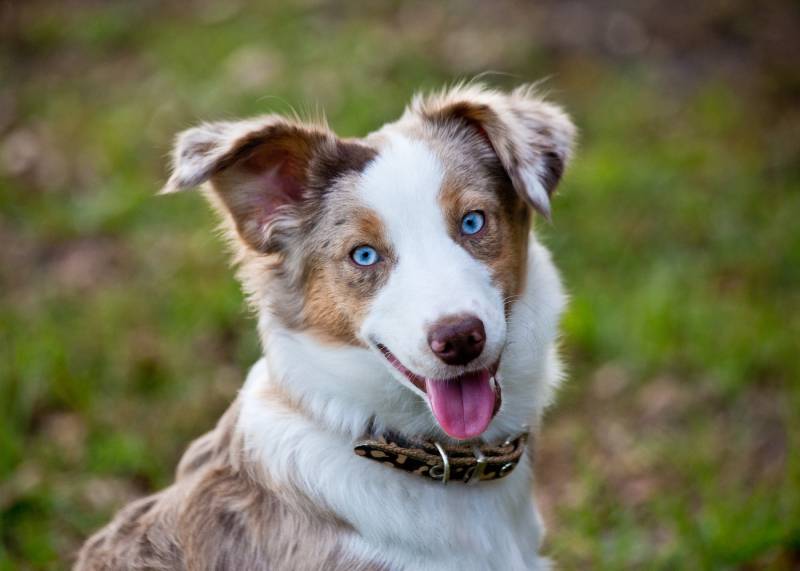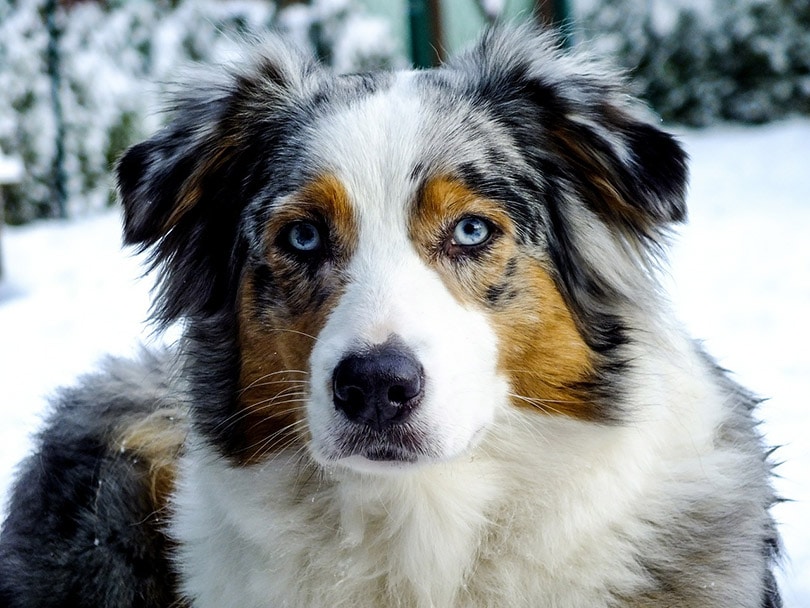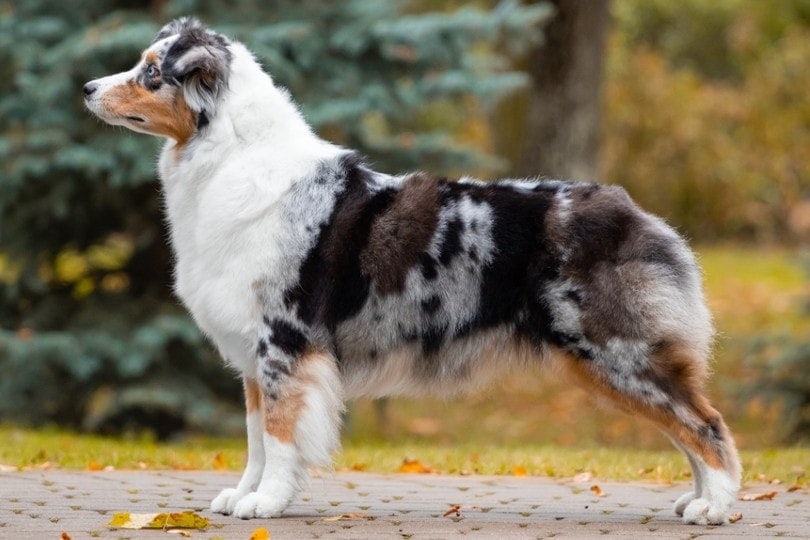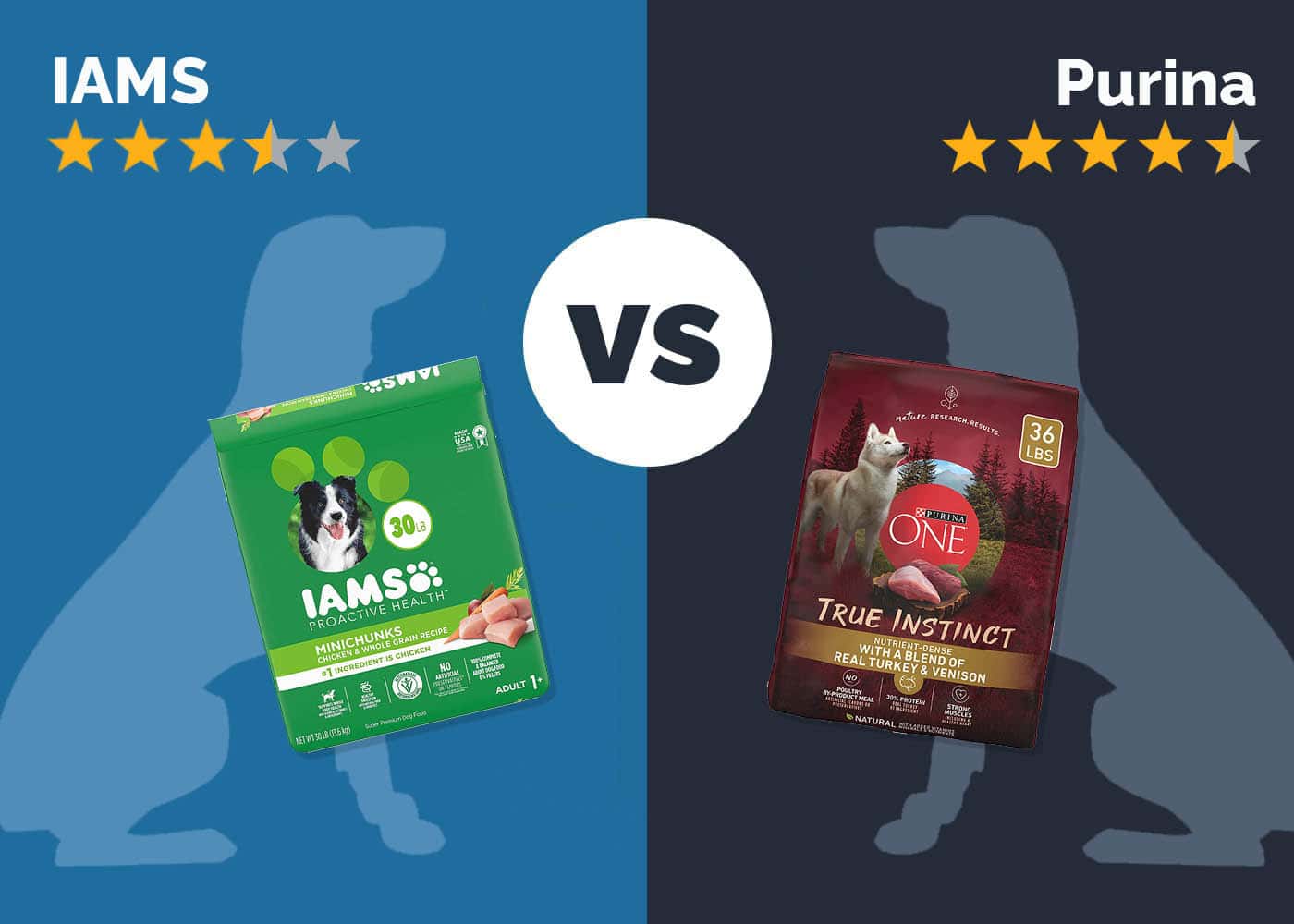Blue Merle Australian Shepherd: History, Facts & Origin (With Pictures)
By Adam Mann
Updated on

Click to Skip Ahead
Blue merle Australian Shepherds are beautiful dogs and among the most popular Australian Shepherds in the United States. But why are they so popular, where did they come from, and what else do you need to know about these beautiful pups? We’ll break it all down for you here.
Breed Overview
| Height: | 18–23 inches |
| Weight: | 40–65 pounds |
| Lifespan: | 12–15 years |
| Colors: | Black, blue merle, red, and red merle |
| Suitable for: | Families with larger children, homes without small pets, and homes with plenty of space |
| Temperament: | High energy, extremely loving, and very intelligent |
The blue merle Australian Shepherd is just one of the color variations of an Australian Shepherd, but they possess all the same personality traits as every other Australian Shepherd. They’re great family dogs. Just ensure you have enough space for them to meet their energy needs, and be ready to deal with some herding instincts.
Blue Merle Australian Shepherd Breed Characteristics
The Earliest Records of Blue Merle Australian Shepherds in History
While you might think the earliest records of the Australian Shepherd would point to Australia, the truth is that the roots point back to Spain. They come from the Basque region of Spain, and the cattle farmers there took them with them to Australia.
When those dogs finally made it to the United States, it was from Australia, and Americans called the dogs Australian Shepherds even though they originally came from Spain.
But while these dogs have ancient roots, the American Kennel Club (AKC) didn’t formally gain recognition until 1991—over 100 years after the AKC formed!

How the Blue Merle Australian Shepherd Gained Popularity
The first Australian Shepherds gained popularity because of their strong herding instincts. They were smart enough to train to complete a wide array of tasks, and people loved having these dogs help them herd different animals.
When they made their way to the United States, they played a big part in rodeos, which is part of the reason they so quickly gained popularity in the United States.
While Australian Shepherds today don’t herd farm animals quite as often, they’ve remained popular because of their sweet natures and extremely high intelligence. They’re great family dogs too, making them outstanding pets overall.
Meanwhile, the blue merle Australian Shepherd is a classic color option that’s been around as long as the Australian Shepherd itself.
Formal Recognition of Blue Merle Australian Shepherds
While the Australian Shepherd is an old dog breed, it took them a long time to gain formal recognition. In fact, the AKC didn’t formally recognize the Australian Shepherd until 1991. That’s despite the fact that the AKC was formed in 1884!
However, when the AKC did accept the Australian Shepherd, they accepted blue merle as a standard color, which makes sense considering blue merle is a color that’s been around since the beginning of the creation of the Australian Shepherd.
Top 5 Unique Facts About Blue Merle Australian Shepherds
There are many unique facts surrounding the Australian Shepherd, and because of this, there’s no shortage of options for us to pick from. We’ve highlighted five unique facts about the blue merle Australian Shepherd for you here:
1. They Come From Spain
While Australia is in the name, they actually come from Spain. They did settle in Australia for a bit, but that doesn’t change the fact that they have Spanish roots, not Australian roots.
2. They Often Have Different Colored Eyes
Heterochromia is a condition where one eye color differs from the other, and it’s extremely common in Australian Shepherds. It doesn’t have any negative impact on your Australian Shepherd’s life, but it is something that’s pretty cool to look at nonetheless.
3. They Shed Constantly
If you want a dog that doesn’t shed much, the Australian Shepherd isn’t the way to go. They shed almost constantly, so be ready for consistent brushing and bathing to try and get it under control. It’s not a huge deal for everyone, but just know you’ll have dog hair all over the place!

4. They Have Short Tails
While some dogs have nice long tails, many Australian Shepherds have short tails. In fact, it’s a one-in-five chance of having a naturally bobbed tail. This is because ranchers often intentionally bred for this trait because it made it safer for them when herding.
5. They’re Intelligent Dogs
If you want a smart dog, an Australian Shepherd is a great choice. You can train them to complete all sorts of tasks. You’ll need to take the time to train them, but if you dedicate said time, you can teach them to do just about anything.
Does the Blue Merle Australian Shepherd Make a Good Pet?
The blue merle Australian Shepherd makes an outstanding pet for most people. However, they can be a bit temperamental with some other dogs, although you can train them to help with this. Their herding instincts can lead to problems with other pups, especially if they’re smaller dogs.
They can also present problems with smaller pets and kids, and it all goes back to their herding instincts. While you can train them to behave properly, it takes lots of consistency and lots of training to get their herding instincts in check.

Conclusion
The blue merle Australian Shepherd is a gorgeous dog that makes a great pet. Now that you know a bit more about them, you can decide if they’re the right fit for you. And even if they’re not, you know a bit more about this interesting and loving breed.
Related Reads:
Featured Image Credit: Danielle W Press, Shutterstock












